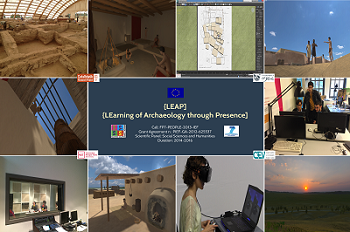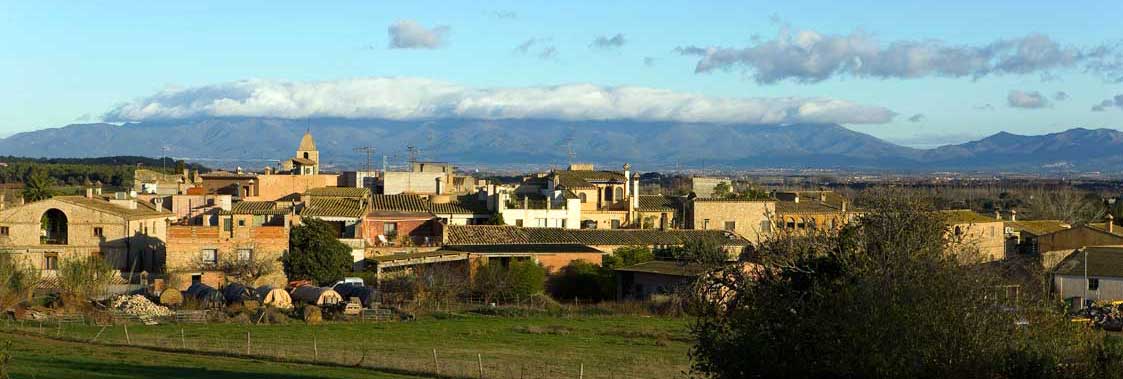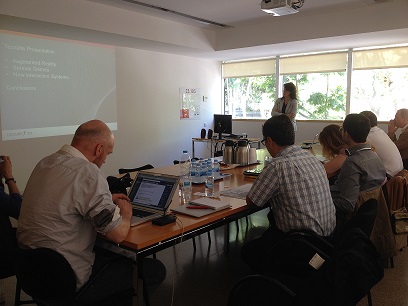Events
{LEAP] at Sightations

During December 19-21, {LEAP] participated at Sightations, an exhibition about archaeological visualization running as part of the international conference TAG 2016 in Southampton. Unfortunately, we could not bring ÇH3D live, but the "making of" video was displayed along many other interesting reflections about archaeological visual conventions.
{LEAP] at Archaeovirtual
From the 27th to the 30th of October 2016, {LEAP] was in Paestum. This impressive archaeological site, located in Salerno (Italy), hosts every year the renowned Mediterranean Exchange of Archaeological Tourism. One of the most important participants is Archaeovirtual, the largest international exhibition on Virtual Archaeology, organised since 2006 by the Italian National Research Council (CNR ITABC VHlab). ÇH3D was one of the 8 projects selected in the international call for proposals. During the exhibition, school pupils, families, and professionals put on the Head-Mounted Display and experienced Çatalhöyük 9000 years ago. You can see some reactions in the pictures below. Check also {LEAP]'s page on Facebook for videos and more...
Evaluation of ÇH3D
The evaluation of the VR-mediated experience was conducted during the last two months of the project. We wanted to have between 80-100 participants with diverse backgrounds, levels of expertise with and interest in VR technology, videogames and Cultural Heritage. For expert users, we recruited students and teachers from UPF. But for general audiences we mobilized... a whole village during a weekend! Ventalló, a summer and second residence village located in the North of Catalonia, provided a representative sample of potential users from 12 to 80 years of age. The news about the event appeared on Aug 1, 2016 in "Diari de Girona", a daily newspaper based in Girona, the second most important Catalan city.

My gratefulness to the inhabitants of Ventalló for their participation!
Behind the Pixel: Practices and Concepts in Virtual Archaeology
For the 4th Archaeological Seminar of the University History Institute Jaume Vicens Vives (Dec 14, 2015), we wanted to bring together an international group of researchers in History and Cultural Heritage to explore the understandings of the past behind Virtual Reality (VR) uses in the Historical Sciences. Since the 1990's, the role of VR as a tool to disseminate and investigate the past has increased exponentially. However, the values and interests behind virtual reconstructions have been rarely explored. In fact, objectivity has been often assumed as a major value of VR, which has reinforced Western hegemonic notions of historical processes. Biases such as gender, race, class, heterosexism, eurocentrism and others -which have been long analysed in other domains of the discipline- are awaiting critique in VR. It was our ambition that the workshop would constitute a step towards such new approaches.
During the morning session, Neil Silberman (Coherit Associates) analysed the connections between memory and heritage, and emphasized the currently underused capacity of digital technologies to create and share meanings. Paloma González and Clara Masriera (UAB) compared the usefulness of digital and traditional archaeological images from several projects to propose a new paradigm of knowledge construction. After the coffee break, Sandra Monton and Laia Pujol (Pompeu Fabra University) selected representative examples in Virtual Archaeology to show that far from being objective, virtual reconstructions convey specific historical views. Carme Miró (Barcelona City Council) presented Barcino 3D, a multiplatform application developed by an interdisciplinary group that aims to investigate and promote the Roman archaeological heritage of Barcelona.
In the afternoon session, Kevin Kee (University of Ottawa) and Timothy Compeau (Brock University) showed best practices in Canada and proposed the three laws of historical Augmented Reality. Joan Anton Barceló (UAB) advocated for the use of 3D models as functional simulation of archaeological objects in order to propose new interpretations of the archaeological record. After the coffee break, Eleftheria Paliou (University of Heidelberg) demonstrated the possibility of using acoustic and visibility analysis to understand the social function of architectural spaces. Grant Cox (Artasmedia) discussed the creation of 3D models from the professional and technical perspective, and focused on the concept of realism.
The seminar concluded with a final debate about the most important issues that had appeared during the day, such as the importance to design virtual environments according to explicitly defined goals, or the influence that present funding strategies and research policies have on Digital Heritage and consequently on current (virtual) reconstructions of the past.
Programme and abstract here.
Training sessions at the Archaeological Service of the Catalan Government
On Nov 9 and 16, 2015 {LEAP] was invited to participate as speaker in the training course “3D modelling in Archaeology”. The course was organized by the Archaeological Service of the Catalan Government and attended by archaeologists and computer scientists of the aforementioned public institution.
In the first session, Dr Laia Pujol provided a theoretical background for VR, as well as a general overview of methodologies, technologies, projects, funding opportunities, research labs, and publications related to Digital Heritage.
In the second session, attendees were invited to put into practice the previous information through a hands-on activity in which they had to use specific resources provided by the trainer to produce a paper mock-up of a virtual reconstruction of a site excavated by the Archaeological Service.
It was an amazing outreach activity for the {LEAP] project. You can follow the development of the session below.
{LEAP] Workshop
On Monday, the 18th of May 2015, {LEAP] organized the international workshop "Cultural Presence in Archaeology. Theory, modelling and evaluation". Specialists in Archaeology, VR, Presence, Didactics of the Social Sciences, Neuroscience and HCI, as well as the academic audience, exchanged perspectives and opinions during the morning debate and the afternoon demo sessions. The main conclusions are summarized below.
 About Cultural Presence
About Cultural Presence
Virtual Archaeology is more than just creating virtual reconstructions. Seemingly, Virtual Heritage aims at more than the simple communication of scholastic information, it has to do with understanding culture as a whole, and satisfying audiences' expectations and needs
In comparison with books or information-based media, the added value of VR for Archaeology is to provide experiences, not guided only by visual stimuli but by interaction between users and the virtual world. The virtual experience should not aim at the memorization of facts, but at feelings, awareness, inspiration, exchange. Unfortunately, VR remains limited because it cannot reproduce the richness of the sensorial input from the world.
Cultural behaviour can be considered a subset of social behaviour; therefore, Social Presence (feeling of agency, interaction) is more important than Cultural Presence. Social behaviour generates culture and places, which in turn influence inter- and intra-personal interactions. This is why 3D models should have NPC with their own stories and autonomous behaviour.
Yet, Cultural Presence carries the unsolved critiques raised in the HCI field. There are still concerns that Presence may not in fact be an artificially created and probably induced term, loosely associated with other concepts (immersion, attention, fidelity of stimuli, task performance, transparency of interface), and not necessarily stable across contexts and subjects.
Guidelines for design
The Seville Principles provide a suitable starting point for Virtual Archaeology projects, and should be transformed into a questionnaire or check list that all projects should follow. Unfortunately, this is seldom the case: the idea of pure entertainment still prevails, and funding is mostly used to produce empty, hyperrealistic reconstructions.
With regard to visual representation, the use of photorealistic or minimalistic depictions may be correlated with the general concept of archaeology as a profession.
There are currently a range of technologies to display VR models, either in Augmented or Immersive Reality. Yet, virtual reconstructions are not created in the void. This is why, instead on focusing on interfaces and archaeological content, projects should establish design goals that take into account the context and the agents, and adopt the appropriate methodologies.
To achieve all this, we should not aim at a single product (approach adopted until now) but build a component-based reconstruction for different purposes and audiences.
Also, games are a promising field for Virtual Archaeology because they have several advantages: they are engaging because they present a challenge; failure does not constitute a serious issue; a culture or a phenomenon can be understood by learning and applying specific rules; etc.
About evaluation
When undertaking evaluation, it is fundamental to take into account the context where VR is displayed (goal of display and situation of the surrounding environment).
Because VR provides (visual) experiences, formal evaluation or usability methods should be discarded, and evaluation should aim at assessing holistic experiences (not systems or acquisition of information).
Finally, given the fact that Presence may change according to the context, the user, etc., we may need to find different assessment methodologies for different circumstances. Questionnaires remain problematic with regard to the assessment of Cultural Presence, because the concept may not be well understood by users, and if explained, then it may influence their answers.
